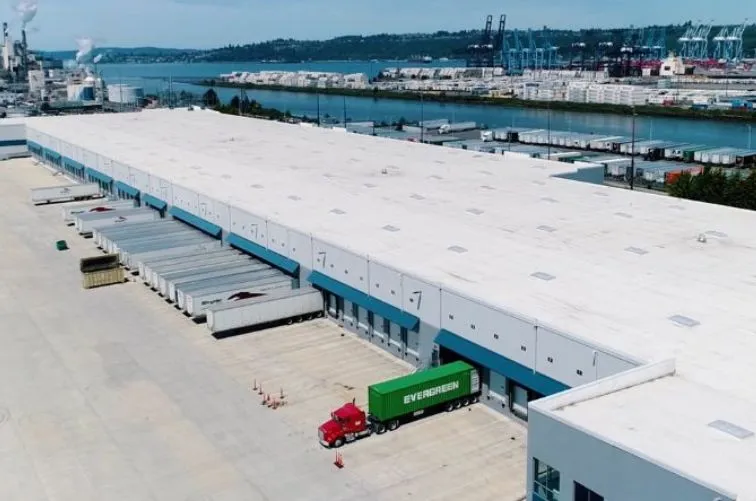Just-in-Time (JIT) logistics and distribution services are supply chain management strategies that originate from the Toyota Production System. JIT logistics prioritizes the delivery of materials and products just as they’re needed, reducing the need for storage and cutting down on inventory costs.
This overview explores the fundamentals of JIT logistics and distribution, their advantages and disadvantages, and how Stryder USA exemplifies JIT in action.
What is Just-in-Time in Logistics? Meaning and How it Works
Just-in-Time logistics is a supply chain management approach that synchronizes the arrival of raw materials and components with production schedules. Developed by Taiichi Ohno for the Toyota Motor Corporation, JIT logistics has enabled companies to produce goods more efficiently, reduce excess inventory, and improve cash flow.
JIT logistics optimizes the flow of materials received with the production floor’s needs, allowing companies to achieve minimal inventory levels and avoid overstocking, leading to a smoother, more responsive and cost-effective supply chain.
JIT logistics requires careful planning and collaboration across the entire supply chain, including 3PL companies, suppliers, manufacturers, and/or distributors. This approach also relies on precise demand forecasting and strong relationships with reliable suppliers to ensure that materials are available at the right time. When executed well, JIT logistics keeps inventory costs low and supports rapid adjustments to changes in demand.
JIT Logistics Examples:
- Automotive Industry: Car manufacturers, including Toyota, use JIT logistics to ensure that components like seats, engines, and electronics arrive exactly when they’re needed for assembly. This minimizes storage costs and eliminates excess stock.
- Food and Beverage Sector: Many companies in the food industry adopt JIT logistics to maintain fresh inventory, reducing waste and meeting consumer demands promptly. With precise timing, they avoid the risk of expired or unsold inventory.
What is Just-in-Time Distribution?
Just-in-Time distribution is the application of JIT principles at the final stage of the supply chain. Instead of holding large amounts of stock in warehouses, companies using JIT distribution deliver products to clients, customers, or retailers on an as-needed basis. This method reduces excess inventory, lowers storage facility costs, and enables companies to respond quickly to demand changes, ensuring a smooth flow of products through the distribution network.
In JIT distribution, businesses keep inventory levels as low as possible while relying on reliable transportation networks and accurate demand forecasting. As with JIT logistics, strong supplier relationships are critical. Without them, JIT distribution risks delays that could disrupt the entire process and lead to stockouts, missed sales, or increased costs.
Just-in-Time Distribution Examples:
- Retail Chains: Retailers, especially grocery stores, benefit from JIT distribution by minimizing dead stock and reducing waste. Products are delivered frequently in small quantities, keeping shelves stocked without excess.
- E-commerce: Many e-commerce companies use JIT distribution to fulfill orders directly based on customer demand, ensuring timely delivery without overloading warehouses with excess inventory.
Advantages of Just-in-Time Logistics & Distribution
JIT logistics and distribution offer significant benefits that make them attractive to businesses across industries:
- Reduced Inventory Costs: JIT maintains minimal inventory, meaning companies save on storage costs and avoid excess inventory, freeing up capital for other investments.
- Improved Cash Flow: Since products and materials are ordered as needed, companies experience better cash flow and can allocate resources to growth or new product development.
- Enhanced Production Efficiency: JIT helps streamline production processes, eliminating waste and improving overall productivity. Functional production cells and production cycles are optimized for efficiency.
- Increased Flexibility: With lower stock levels, companies can quickly adapt to demand fluctuations, including seasonal changes or sudden surges in demand.
Disadvantages of Just-in-Time Logistics & Distribution
While JIT offers many benefits, there are also risks and potential downsides to consider:
- Supply Chain Disruptions: JIT logistics relies on precise timing and a smooth flow of materials. Supply chain disruptions from unforeseen events like labor strikes, natural disasters, supplier delays, or transportation issues can have significant impacts.
- Limited Buffer Inventory: JIT operates with minimal or no buffer inventory, so any miscalculation in demand forecasting can lead to stockouts or unmet customer demand.
- High Dependence on Reliable Suppliers: JIT systems require strong supplier relationships and contingency plans. Any issue with suppliers, such as a delay in delivery or product defects, can impact the entire supply chain.
- Risk of Stockouts: Demand forecasting is essential in JIT, but any inaccuracy can result in stockouts, lost sales, and potentially dissatisfied customers.
Just-in-Time Cargo Logistics With Stryder USA
Stryder USA is a logistics services company that offers transportation solutions utilizing the JIT distribution model, helping clients achieve operational efficiency by aligning distribution precisely with demand. Stryder’s network ensures timely delivery for a wide range of clients, reducing both inventory levels and costs.
Stryder’s flexible asset-based services ensure that products are available as needed, helping clients avoid excessive stock or unsold inventory. This approach offers clients the competitive edge needed in today’s fast-paced market, reinforcing Stryder USA’s track record as a leading JIT distribution provider.
Streamline your supply chain with Stryder Group’s Just-in-Time (JIT) warehousing and logistics, ensuring precise, on-time deliveries that reduce inventory costs.
Contact us at 253-458-7705 or sales@go-stryder.com, we’d love to hear from you!


Recent Comments